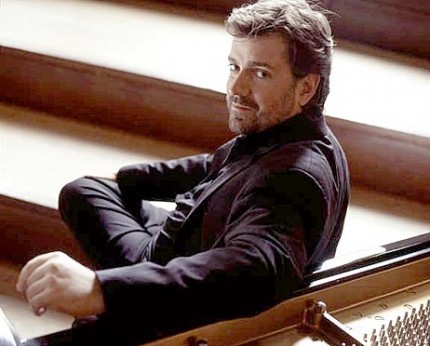Pianist boosts Music of the Baroque’s Classical-era program

The chronological dates we assign to artistic periods are notoriously malleable, usually a matter of convenience rather than true accuracy. Jane Glover, music director of Music of the Baroque, delights in periodically pushing beyond the years 1600-1750 that have become the handy default dates for the Baroque era.
She did so with typically happy results at MOB’s concerts Sunday in Skokie and Monday in Chicago. Titled Classical Vienna, the program included Schubert’s Symphony No. 5 (1816), Mozart’s G Major Piano Concerto, No. 17, K. 453 (1784) and Beethoven’s Symphony No. 2 (1802-3). In lively remarks before Monday’s concert at the Harris Theater, Glover discussed the links among the three composers. All three found an artistic home in Vienna, and each was influenced greatly by Haydn, who made Vienna his home base in the years before his death in 1809. For Glover, Vienna during the final decades of the 18th century and start of the 19th was a city of “gleaming talent.”
That gleam was apparent throughout Monday night’s program. Glover’s emphasis on transparent textures and buoyant, lyrical flow suited the generally cheerful mood that prevailed in all three works. But the evening’s revelation was Portuguese pianist Artur Pizarro who appeared as soloist in the Mozart concerto.
Now in his mid-40s, Pizarro has been making a name for himself in Europe, especially Great Britain. His touch throughout the concerto was limpid and clear, with a velvety finish. In the opening movement, he found flashes of humor, a quick little wink to finish off the small figures that raced through the piano’s melodic line. His playing was poetic and full of color, but without any sense of tortured effort or pretentious distortion of rhythms.
In the slow second movement, Pizarro’s interplay with MOB wind soloists, especially flutist Mary Stolper, was highly expressive. Matching their hushed, floating lines, he entered the conversation with a quiet, luminous phrase that seemed to waft in from some far-distant, serene land. The movement unfolded with a powerful mix of smoky shadows and flashes of silvery light. After the vigorous finale, the audience exploded into fierce applause for Pizarro, joined by MOB players and Glover. With luck, he’ll be back in Chicago soon.
In both the Schubert and Beethoven symphonies, Glover emphasized gracious good cheer, creating a forward momentum that never felt rushed. She called for serious heft, however, in Beethoven’s short phrases and occasional dark harmonic turns. Beethoven’s reverence for the classical virtues of symmetry and order were clearly apparent. But we didn’t doubt for a moment that this composer was on the verge of something new and possibly disruptive.
Posted in Uncategorized





Posted Nov 19, 2013 at 12:48 pm by Cupcake
If I were a reviewer, this is precisely what I would have written. Pizarro was absolutely phenomenal–although I’ve heard Mozart’s G Major Concerto many times before, the slow movement was a revelation in Glover and Pizarro’s hands. Let’s hear him again in this city sooner rather than later!
Posted Nov 19, 2013 at 5:32 pm by David de Quay
I also noticed how much joy and genuine love he had for playing this piece and the “dialogue” between him, the superb MOB orchestra, and Ms. Glover.
Posted Nov 20, 2013 at 1:05 am by Roland Buck
One can make a case for a modern instrument Baroque orchestra expanding its repertoire into the classical period of the second half of the 18th century to include works by Haydn, Mozart and other classical period composers, such as Von Dittersdorf, Boccerini, and Stamitz, provided it is done in an historically informed manner. That is, the continuos are included and an 18th century fortepiano, rather than a modern piano, is used. But there cannot be any justification for including Romantic era composers, like Beethoven and Schubert. This repertoire is well covered by standard symphony orchestras, like the Chicago Symphony, and no specialized orchestra is needed to provide such works with a fair hearing.
Incidentally, it would have been interesting if you had indicated whether the Mozart performance used a fortepiano or a modern one.
Posted Nov 20, 2013 at 11:01 pm by Joan Staples
I agree wholeheartedly with this review! It was a pleasure to hear these familiar works played so well. It illustrates why it is important to continue to play works we know; we can learn to hear them anew!